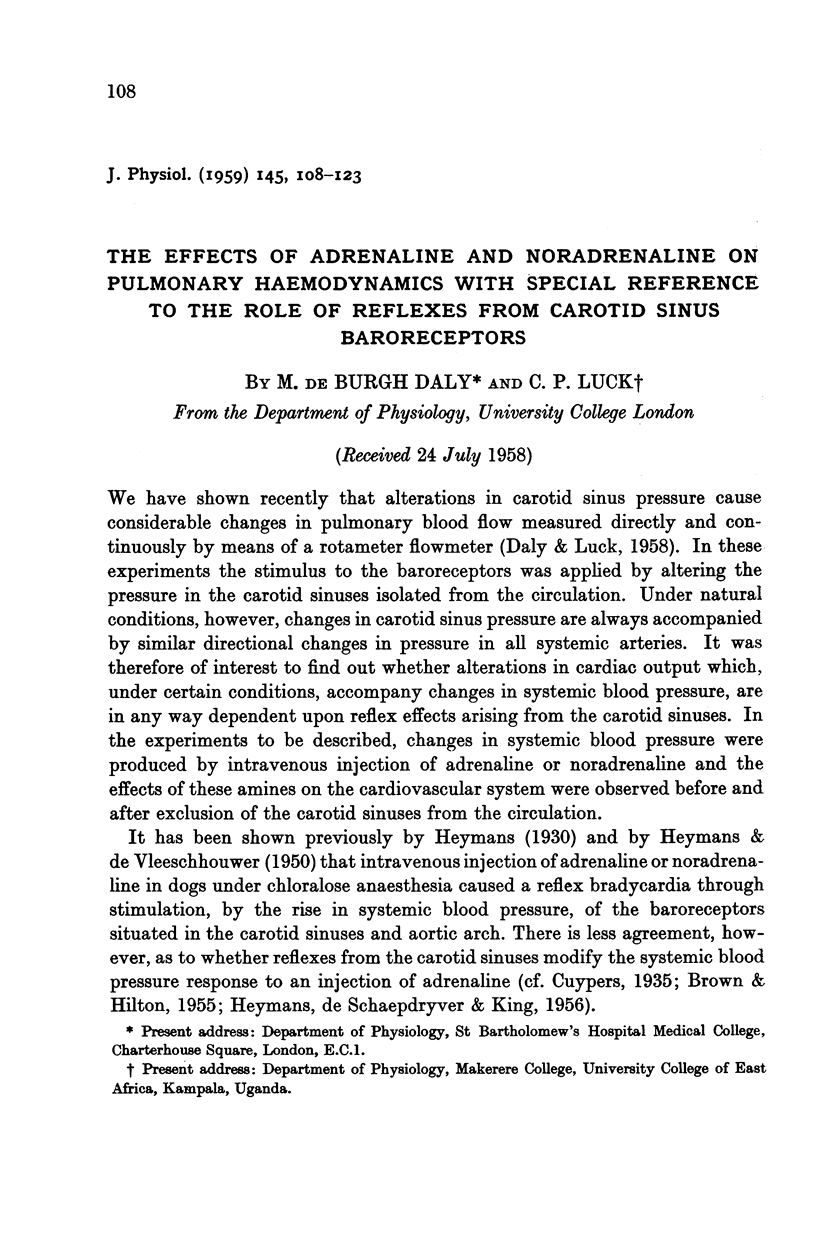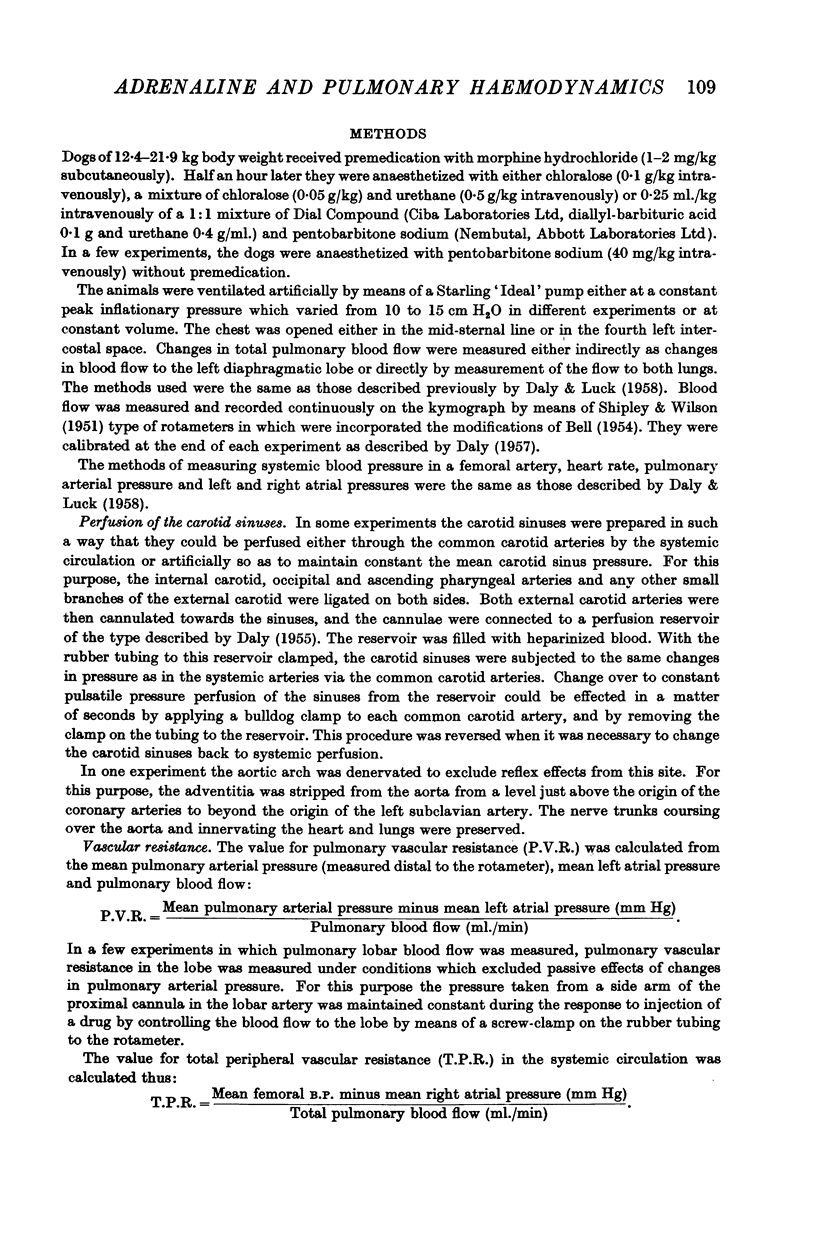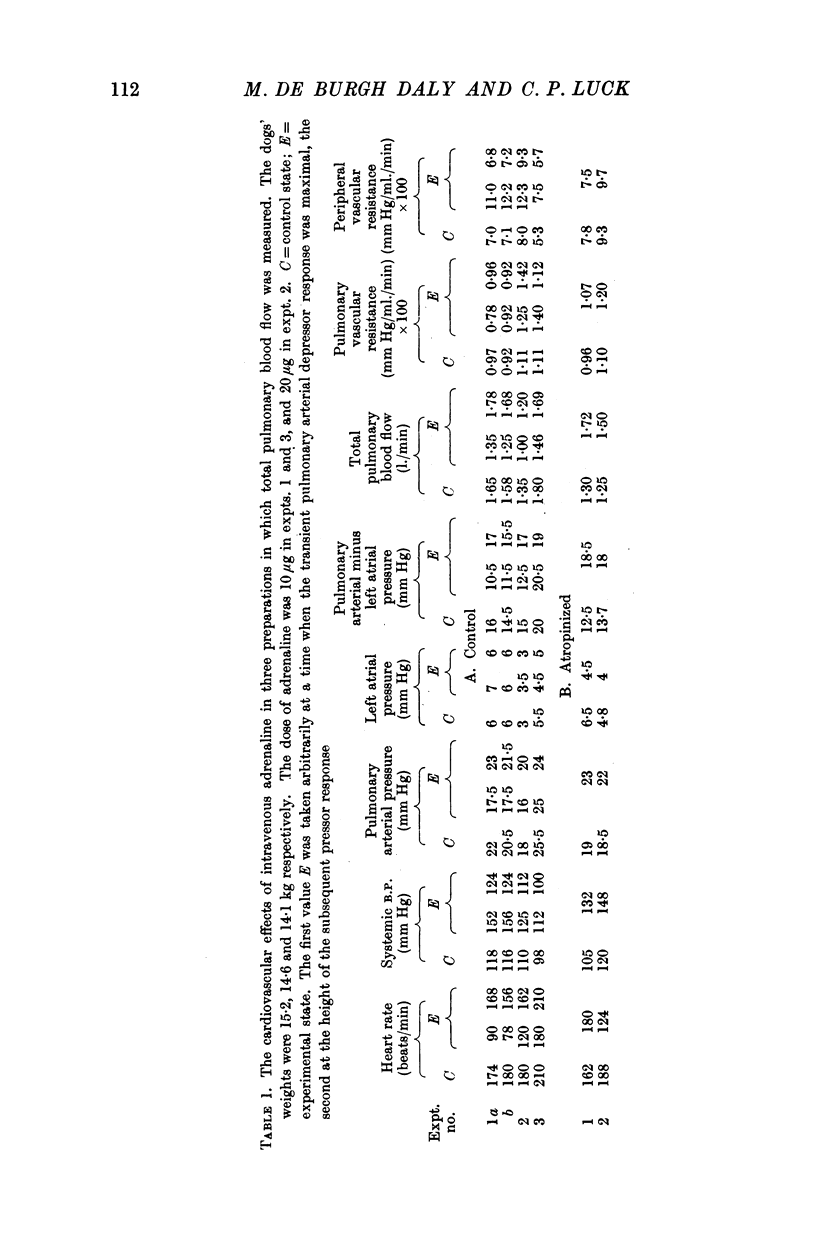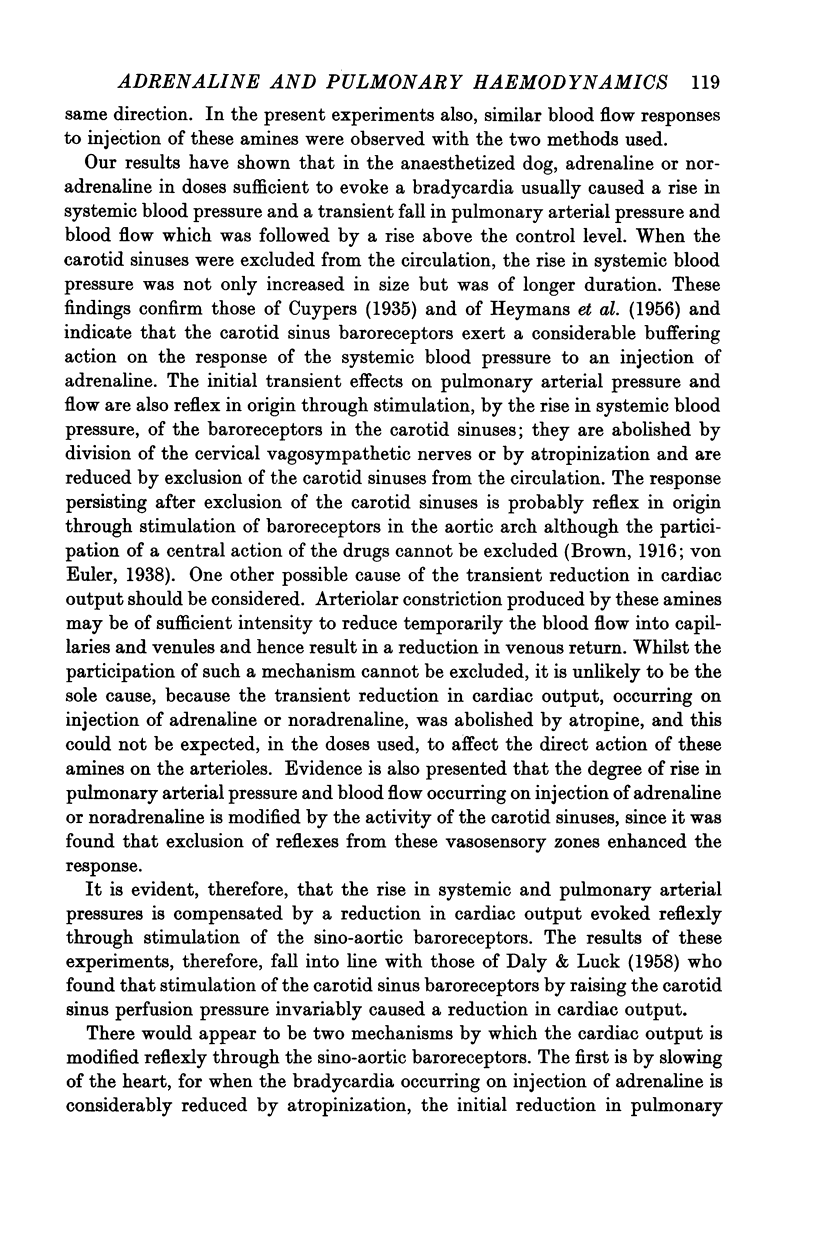Full text
PDF















Selected References
These references are in PubMed. This may not be the complete list of references from this article.
- BARCROFT H., STARR I. Comparison of the actions of adrenaline and noradrenaline on the cardiac output in man. Clin Sci. 1951 Aug;10(3):295–303. [PubMed] [Google Scholar]
- BELL P. M. A modified recording rota-meter for measuring blood flow. J Physiol. 1954 Jul 28;125(1):9–10P. [PubMed] [Google Scholar]
- BROWN R. V., HILTON J. G. Baroreceptor reflexes in dogs under chloralosane anesthesia. Am J Physiol. 1955 Dec;183(3):433–437. doi: 10.1152/ajplegacy.1955.183.3.433. [DOI] [PubMed] [Google Scholar]
- DE DALY M B., LUCK C. P. The effects of carotid sinus baroreceptor reflexes on pulmonary arterial pressure and pulmonary blood flow in the dog. J Physiol. 1958 Sep 23;143(2):343–368. doi: 10.1113/jphysiol.1958.sp006064. [DOI] [PMC free article] [PubMed] [Google Scholar]
- DE DALY M B. The cardiovascular effects of anticholinesterases in the dog with special reference to haemodynamic changes in the pulmonary circulation. J Physiol. 1957 Dec 3;139(2):250–272. doi: 10.1113/jphysiol.1957.sp005889. [DOI] [PMC free article] [PubMed] [Google Scholar]
- DE SCHAEPDRYVER A. F., HEYMANS C., KING T. O. Carotid sinus baroreceptors and adrenaline hypertension. Arch Int Pharmacodyn Ther. 1956 Sep 1;107(3-4):479–492. [PubMed] [Google Scholar]
- FOWLER N. O., WESTCOTT R. N., SCOTT R. C., McGUIRE J. The effect of norepinephrine upon pulmonary arteriolar resistance in man. J Clin Invest. 1951 May;30(5):517–524. doi: 10.1172/JCI102467. [DOI] [PMC free article] [PubMed] [Google Scholar]
- HAMILTON W. F. The Lewis A. Connor memorial lecture: the physiology of the cardiac output. Circulation. 1953 Oct;8(4):527–543. doi: 10.1161/01.cir.8.4.527. [DOI] [PubMed] [Google Scholar]
- HEYMANS C., de VLEESCHHOUWER G. R. Mechanism of bradycardia by noradrenaline. Arch Int Pharmacodyn Ther. 1950 Dec;84(2-3):401–408. [PubMed] [Google Scholar]
- LOTTENBACH K., WEGMANN A. Die Wirkung von Nor-Adrenalin auf die Herz-frequenz und ihre Deutung. Cardiologia. 1955;27(3):135–143. [PubMed] [Google Scholar]
- Oliver G., Schäfer E. A. The Physiological Effects of Extracts of the Suprarenal Capsules. J Physiol. 1895 Jul 18;18(3):230–276. doi: 10.1113/jphysiol.1895.sp000564. [DOI] [PMC free article] [PubMed] [Google Scholar]
- PAGE I. H., McCUBBIN J. W. Cardiovascular reactivity. Circ Res. 1954 Sep;2(5):395–396. doi: 10.1161/01.res.2.5.395. [DOI] [PubMed] [Google Scholar]
- SHADLE O. W., MOORE J. C., BILLIG D. M. Effect of 1-arterenol infusion on central blood volume in the dog. Circ Res. 1955 Jul;3(4):385–389. doi: 10.1161/01.res.3.4.385. [DOI] [PubMed] [Google Scholar]
- SHIPLEY R. E., WILSON C. An improved recording rotameter. Proc Soc Exp Biol Med. 1951 Dec;78(3):724–728. doi: 10.3181/00379727-78-19196. [DOI] [PubMed] [Google Scholar]
- TYRER J. H. The effects of l-adrenaline di-noradrenaline on the mean right atrial pressure of sheep with intact circulations, and on the mean inferior vena caval pressure of artificially perfused sheep. Q J Exp Physiol Cogn Med Sci. 1953;38(3):161–168. doi: 10.1113/expphysiol.1953.sp001022. [DOI] [PubMed] [Google Scholar]
- V Euler U. S. The central depressor action of adrenaline and its inhibition by ergotoxine. J Physiol. 1938 Feb 16;92(1):111–123. doi: 10.1113/jphysiol.1938.sp003586. [DOI] [PMC free article] [PubMed] [Google Scholar]
- WITHAM A. C., FLEMING J. W. The effect of epinephrine on the pulmonary circulation in man. J Clin Invest. 1951 Jul;30(7):707–717. doi: 10.1172/JCI102484. [DOI] [PMC free article] [PubMed] [Google Scholar]


